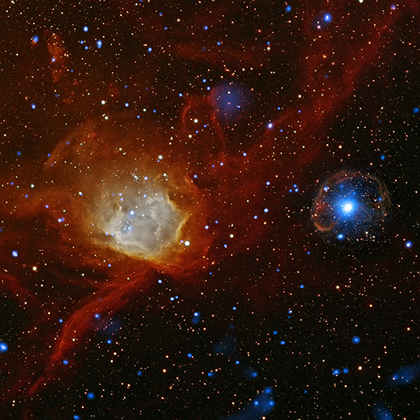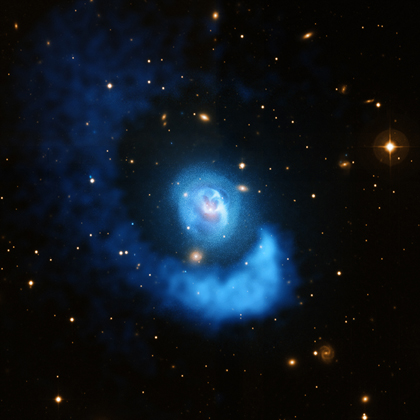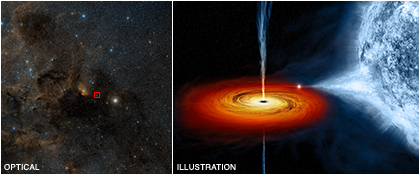Changing of the Guard at NASA Science
Today, a new leader reports to NASA HQ to take over what is known as the Science Mission Directorate, or SMD. SMD is the branch of the agency that is responsible for all things science at NASA - from heliophysics to Earth science to planetary science and astrophysics. Chandra, as well as the other "Great Observatories" missions of Hubble and Spitzer, and many, many missions belong to the astrophysics realm of SMD.

Celestial Bauble Intrigues Astronomers
With the holiday season in full swing, a new image from an assembly of telescopes has revealed an unusual cosmic ornament. Data from NASA's Chandra X-ray Observatory and ESA's XMM-Newton have been combined to discover a young pulsar in the remains of a supernova located in the Small Magellanic Cloud, or SMC. This would be the first definite time a pulsar, a spinning, ultra-dense star, has been found in a supernova remnant in the SMC, a small satellite galaxy to the Milky Way.
Winter Solstice 2011
This year, the winter solstice takes place on Thursday, December 22 at 12:30 a.m. EST. Many people know that the winter solstice marks the day when winter officially stars in the Northern Hemisphere, and when days will start to become incrementally longer. But what exactly is going on?
It all has to do with the tilt of the Earth's axis. In other words, the Earth does not rotate on its axis straight up and down in relation to its path around the Sun. Rather, it is always angled at 23.5 degrees. So as the Earth travels around the Sun during the course of the year, one pole is tilted more toward the Sun that the other with the exception of two days: the vernal (spring) and autumnal (fall) equinoxes.

STOP at the NSTA
One of the projects that we're very excited around here is something called "Stop for Science!" (aka, STOP). This is a program aimed at engaging kids outside of classroom time in thinking about science. STOP is meant to be fun, but also informative. The centerpiece of the program is a series of five posters covering different areas. The topics range from "how tall is tall" to "when stars go boom." Each poster has accompanying material including background information, questions for different ages of kids, and teacher resource guides.
A Galaxy Cluster Gets Sloshed
Like wine in a glass, vast clouds of hot gas are sloshing back and forth in Abell 2052, a galaxy cluster located about 480 million light years from Earth. X-ray data (blue) from NASA's Chandra X-ray Observatory shows the hot gas in this dynamic system, and optical data (gold) from the Very Large Telescope shows the galaxies. The hot, X-ray bright gas has an average temperature of about 30 million degrees.
Happy Trails, MSL
While most of us in the US were still digesting from the Thanksgiving holiday this past weekend, many folks at NASA were incredibly busy. That's because on Saturday, November 26th, NASA launched the Mars Science Laboratory (MSL) into space aboard an Atlas V rocket.
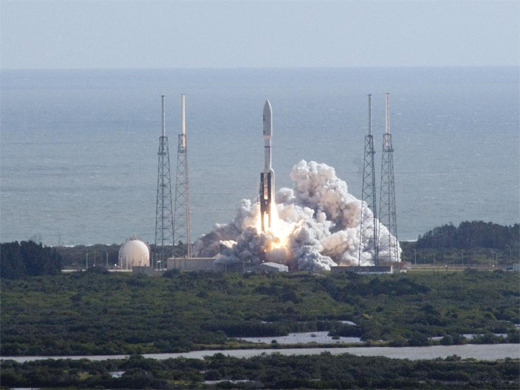
Black Holes on the Move?
Q: Can black holes move through space?
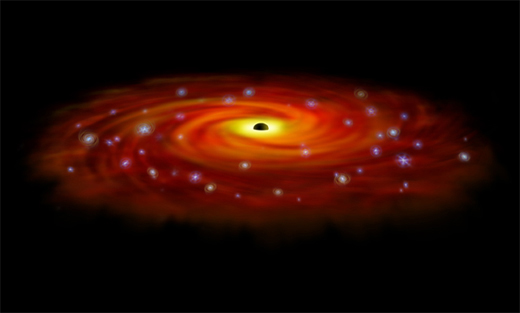
A: Black holes can indeed move through space. The really massive black holes at the centers of galaxies will stay there unless something catastrophic happens, like a direct collision between two galaxies.
NASA's Chandra Adds to Black Hole Birth Announcement
On the left, an optical image from the Digitized Sky Survey shows Cygnus X-1, outlined in a red box. Cygnus X-1 is located near large active regions of star formation in the Milky Way, as seen in this image that spans some 700 light years across. An artist's illustration on the right depicts what astronomers think is happening within the Cygnus X-1 system. Cygnus X-1 is a so-called stellar-mass black hole, a class of black holes that comes from the collapse of a massive star. The black hole pulls material from a massive, blue companion star toward it. This material forms a disk (shown in red and orange) that rotates around the black hole before falling into it or being redirected away from the black hole in the form of powerful jets.
30 Doradus and The Growing Tarantula Within
The star-forming region, 30 Doradus, is one of the largest located close to the Milky Way and is found in the neighboring galaxy Large Magellanic Cloud. About 2,400 massive stars in the center of 30 Doradus, also known as the Tarantula Nebula, are producing intense radiation and powerful winds as they blow off material.
Changing the way we view the world
An era of space exploration ended on July 21, 2011 when Space Shuttle Atlantis touched down before dawn at Kennedy Space Center. The shuttle flights excited our imaginations and tragically revealed the dangers of space travel as mankind dipped its toes into the cosmic ocean. One of the most enduring legacies of the shuttle was established in the 1990's, when the shuttle delivered three of NASA's Great Observatories – Hubble Space Telescope, Compton Gamma Ray Observatory, and the Chandra X-ray Observatory – into space.

